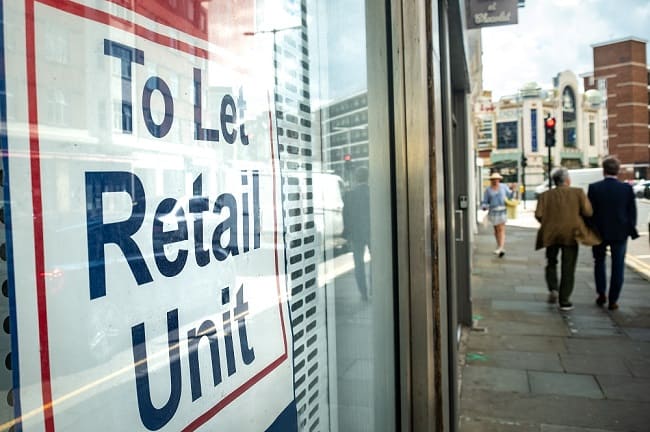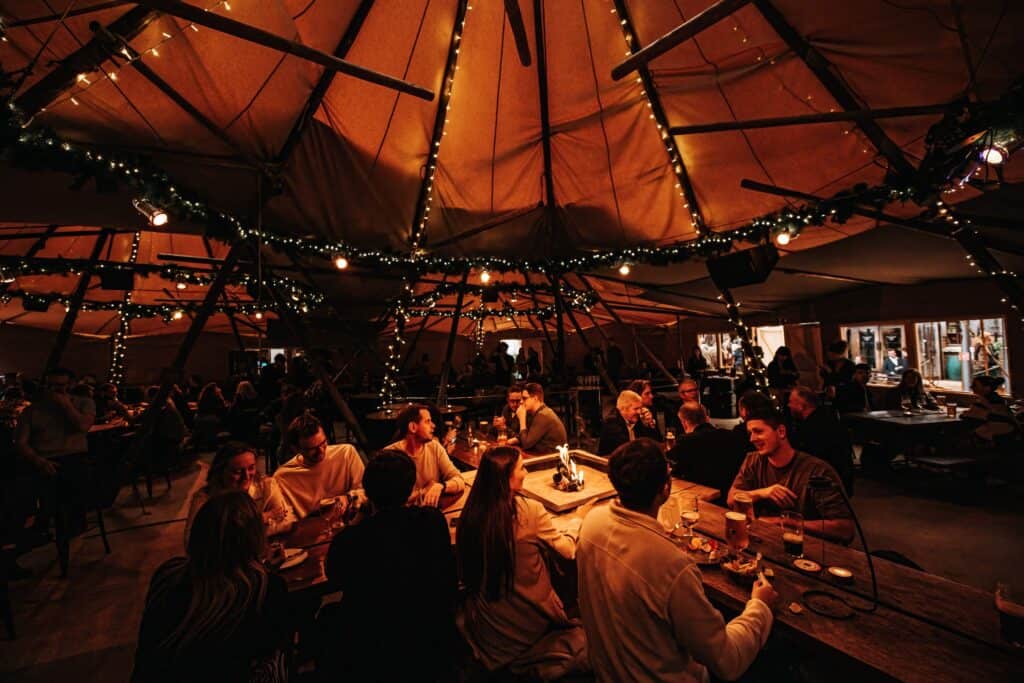
THE RISE OF LEISURE AND MEANWHILE USES
The nights are drawing in and we’ve been noticing a trend emerge in our new project instructions: our leisure-focused clients are thinking creatively about how to provide more space for customers by winter-proofing their premises.
And we’re not the only ones to notice. The BBC has reported today on the changing face of the high street: traditional retail uses are taking up less space while leisure uses are moving in and prospering.
What has caused town centre retail to condense?
Our urban centres are dynamic places and are always changing, shifting in response to market forces and trends. It’s nothing new really. But there’s no doubt now that the retail component of our town centres is condensing, and leisure uses are expanding.
The key driver of this change remains the underlying growth of Internet shopping, but economic downturns and, more recently, forced closures due to Covid-19 have certainly accelerated the trend.
From as early as the turn of the millennium, online shopping took off as a genuine – and more convenient – alternative to visiting the high street in person. This growth hasn’t abated, and the inevitable decrease in town centre footfall has, over time, required us all to think differently about how we draw people back into our town centres.
Retailers will always come and go, but financial downturns combined with a global pandemic spelled the end for major players like Arcadia (whose Topshop, Topman and Miss Selfridge brands were snapped up by online giant Asos – less the stores). Dorothy Perkins, Wallis and Burton have been bought by Boohoo and traditional town centre anchors Marks & Spencer, John Lewis and Peacocks have all closed multiple stores. Other retailers like Jaegar, Jessops, Paperchase and Debenhams have disappeared altogether.
The face of our town centres is changing from a place to shop to a place to do stuff.
How has the market – and planning – responded?
Leisure uses have expanded

The high street has had to adapt to thrive. And, if nothing else, the last few years have shown us that people want to spend time in town (although less and less for ‘shopping’).
Local planning authorities have historically discouraged non-retail uses on the high street, but local plans are now starting to introduce more flexible policies that allow an element of non-retail within the retail core.
In city centres we’ve noticed a rapid expansion in the number of leisure uses from companies like TOCA Social, who we’ve helped secure planning consent for its virtual interactive football and dining experiences. Then there’s virtual darts, adventure golf, escape rooms and axe throwing… the sky’s the limit when it comes to creative group activities up and down the country.
In Bournemouth, the former Debenhams department store is being converted into a series of smaller spaces to offer a broader mix of town centre uses. The ground floor has been retained as a beauty hall occupied by predominantly the same staff but operating on an independent basis. The upper floors see a move away from retail, and are being adapted to incorporate office space, a gallery and a new bar and restaurant, operated by the New World Trading Company. It’s a creative and positive response that we see becoming more prevalent throughout the UK, like at Beales in Kendal, as reported in the BBC.
Outdoor uses have expanded

European-style café culture was already firmly on our shores before Covid-19 hit. 2020 further fuelled Britain’s love for alfresco dining, when socialising was mandated to only be safe outdoors, giving a whole new importance to the British beer garden.
The pandemic taught us that outdoor spaces can function perfectly well for socialising – so long as they are sufficiently protected from our unpredictable British weather.
These outdoor spaces became crucial to the survival of many restaurants and bars and making them as comfortable as possible has been the name of the game ever since.
Operators are adding more seating to outdoor areas and installing canopies to cover existing beer gardens like the tipi at the Oast House in Spinningfields, Manchester which opened last month.
Interventions like these are an important way of extending the trading window at close to summer levels whilst also helping support the night-time economy of a town or city centre, all helping retain jobs.
Our challenge with securing planning permission for temporary uses has been that these applications are time sensitive and are stuck in the same backlog as all the other planning applications and discharge of condition submissions. There’s simply no room for delay – not securing permission for a Christmas space until January can put a bar out of business.
Temporary uses have expanded
Another creative response to vacant buildings has been to incorporate ‘meanwhile’ uses, in order to maintain both vitality and viability while bigger plans work their way through the system. And local authorities are recognising this shift and responding to the need by granting temporary planning permissions and pavement licences in order to support businesses.
At Mayfield in Manchester, the future development plot fronting onto Mayfield Park is a good example of a successful temporary bar and eatery. Escape to Freight Island has a five-year temporary planning permission and hosts a variety of different food vendors within the former depot itself and outside.
In Manchester’s China Town, the former Yang Sing building is another good example, currently hosting Ancoats Pop Up’s Christmas Fair, throughout November and December, with 50 independent traders filling three floors of Canton House. Making good use of an otherwise empty building is key to maintaining vibrancy and active frontages in town centres.
What next for our town centres?
We think this trend will continue with our town centres providing a more blended mix of leisure spaces and retail.
Added to this, we see more residential and care accommodation coming back into the town centres along with medical, education and other public services. After all, town centres generally remain the most accessible locations and change is actually the only inevitable thing in such a dynamic context.
The planning system’s role is to anticipate the likely impact of shifting trends and to protect against unchecked changes that would have an unacceptable impact on the vitality of a town centre.
Local Plans need to incorporate a good degree of flexibility to accommodate change and planners hold an important role in understanding these changing trends and helping to facilitate them. That way the planning system can bring about a positive effect to create great places and ensure the continued vitality of the high street.
If you need up-to-date advice on how to secure consent within a high street context, get in touch with us.